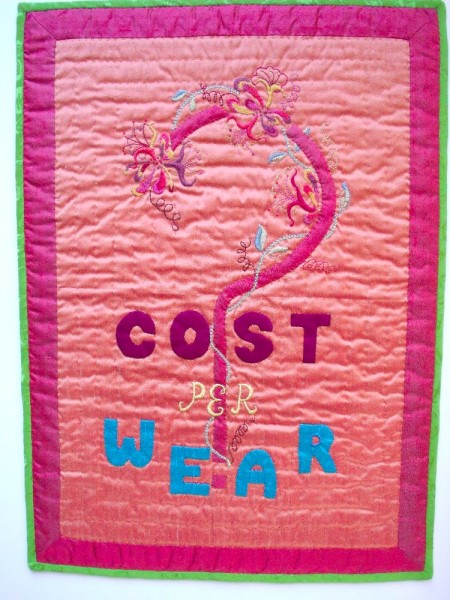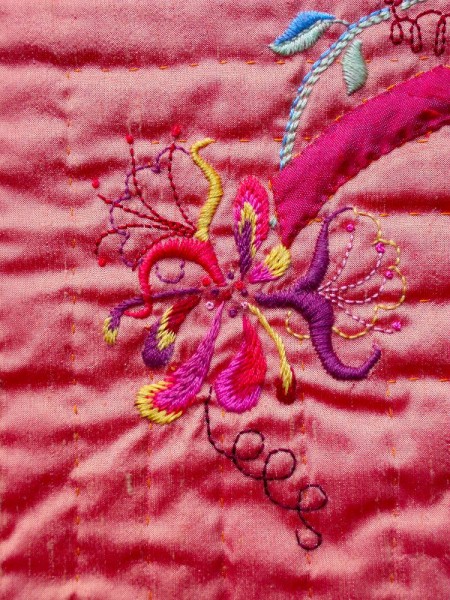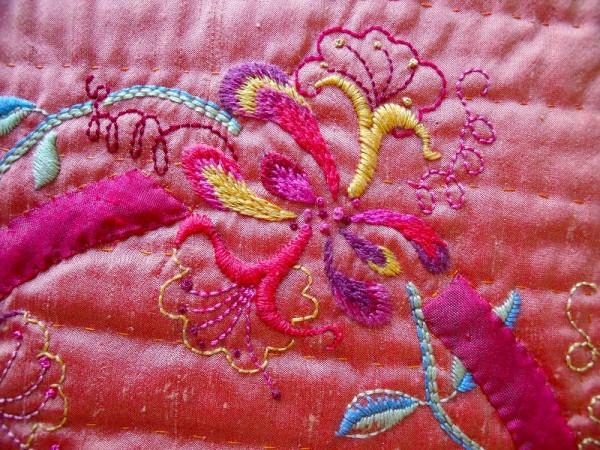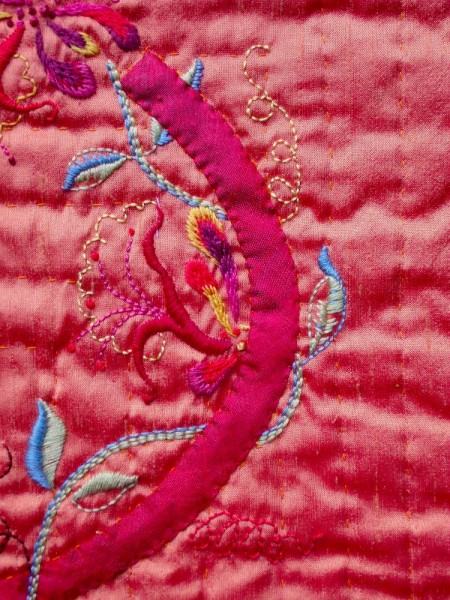I made this hanging for daughter no.1 for Christmas 2 years ago and, interestingly, it has yet to be hung. I know she likes my embroidery but perhaps she felt the subject matter was a bit too pointed and not ideal for a Christmas present. It wasn’t meant as a personal criticism as I think anyone, man or woman, if they love clothes should have a similar poster up on the wall right beside their wardrobe reminding them of this simple principle of economic prudence. Perhaps better, it should be tattooed on the hand that proffers the credit card, although I suspect that if such a warning were always there, a time would come when the tattoo bearer would no longer notice it. But perhaps I am getting rather carried away now.
Put simply (and it is a very simple principle), the idea is that before buying some tempting morsel of silken nothingness, you stop and take a few moments to consider when and how often you will wear it. For example:
£240 is the price a winter coat
If the coat is worn every day for 4 months a year, that is about 120 days a year
If it looks like it will last for, say, 4 years
Then: Cost per Wear = cost of article / number of times worn; i.e. 240/120 x 4 which = .5 or £0.50
On the other hand, you buy something for £10 and never really like it or it never fits quite well enough. You wear it once, hate it even more than to begin with, stuff it into a bag for a charity shop (so you’re not confronted by your mistake and may actually feel slightly virtuous) and try not to think about it. Well, you should, because in this case, the cost per wear is £10.
Of course, let’s not get too sanctimonious about this, everybody’s allowed the odd mistake. But if you get into the ‘cost per wear’ mantra, it may just occasionally save you from throwing away money on something you don’t actually need, or even desperately want. Mothers who see my poster, nod wisely and wish they had one for their own daughter.
The photograph of the hanging as a whole was taken earlier in the year than the photographs of the details. The sun was out on both occasions but the former photo was taken outside in weak spring sunshine between showers, while the others were taken later in summer on a much sunnier day. The true colours are more like the colours of the photgraphs of the details – a peachy coral. Being shot silk, the warp and weft are different shades of the same colour, so the fabric looks quite different in colour depending which way up you hold it; this has contributed to the variation in colour seen in the photographs. Background fabric, edging and binding are silk. The threads used are embroidery cottons and silk buttonhole thread. Stitches are satin stitch, long and short stitch, back stitch, french knots and stem stitch. The question mark was made from a strip of silk cut on the bias so that it could be manipulated into a curve. The top panel was backed by a pale green silk with pure cotton wadding sandwiched in the middle. Quilting was by hand in a fine silk twist.
I think I must make daughter no.1 another hanging of a more inspiring nature to make up for my perceived finger wagging.





One Comment
How about making daughters no 2 & 3 first wall hangings before daughter no 1 gets a second!